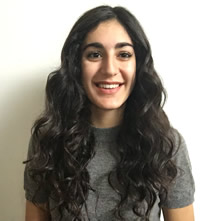How We Heal And Grow
Jeffrey Smith, MD offers his definitive self-help guide to personal change in therapy and in life. He believes that healing takes place when feelings are shared with an empathically attuned and safe other and together you will explore motivations, behaviors and places that harbor resistance to change in order to let go and grow forward.
A review of the Handbook of Body Psychotherapy & Somatic Psychology
There’s always this sense of anticipation when I read a book by editors and authors I personally know. My belly churns; there's an involuntarily pause before I exhale and my heart adds a beat to its rhythmic song because a resonance exists that translates from colleague to text. I hear their voice while reading as if we are together, in person, having an amicable chat.
When I heard that Halko Weiss, Courtenay Young and Michael Soth were part of The Handbook of Body Psychotherapy and Somatic Psychology, when I heard that many colleagues had contributed chapters, I immediately had to read it and share my thoughts with SPT Magazine’s readers.
Brief Dynamic Therapy
As part of the “Theories of Psychotherapy Series” from the American Psychological Association (APA), this book focuses the components and benefits of brief therapy. Intended for clinicians, Levenson’s book is informative and instructive as it is paired with a companion video that demonstrates the treatment. The brevity and organization make this book helpfully simple and user-friendly. Levenson utilizes tables, bulleted lists, and other visuals alongside her well-researched writing to clearly present this treatment as a viable tool for therapists.
Trauma Sensitive Yoga Deck for Kids: For Therapists, Caregivers, and Yoga Teachers
Trauma Sensitive Yoga Deck for Kids: For Therapists, Caregivers, and Yoga Teachers combines yoga practices and psychological science to inform readers on the use of a yoga practice to aid in the treatment of and care for traumatized children. Unlike typical yoga decks, the Trauma Sensitive Yoga Deck for Kids is trauma informed and somatically focused.
A Guide to Body Wisdom
Ann Todhunter Brode has focused on the body, mind, spirit relationship as it shapes our physical relationship for more than 40 years. “Your history determines your shape and eventually your shape determines your history,” she writes (pg. 105). Brode is a teacher, therapist, healer, and writer—her articles have been published in Health Source Magazine, Santa Barbara Independent, Huffington Post and our own SPT magazine.
Origins
Somatic Movement Educator who has read many books by authors in the field, I felt a quickening and rising in my body and became curious, shyly excited, and a little nervous when invited to review a book by Joan Davis. Davis is among a generation of creative professionals in Ireland and across the UK dedicated their lives to in-depth explorations and research through the silent level (non-words) processes and expressions of the human body. In this very small, yet internationally growing world of somatic movement, Davis is among the “rock stars”, and she has rightfully earned her honor and fame through decades of creative, intellectual, emotional, and spiritual research that she integrated into a training programme called Origins.
8 Keys to Parenting Children with ADHD
8 Keys to Parenting Children with ADHD is a timely contribution to the existing literature and an excellent choice for parents given its concise, accessible presentation of the facts and its suggestions for how to utilize them to optimize the wellbeing of each individual child.
Neuro-Narrative Therapy: New Possibilities for Emotion-Filled Conversations
For some time, most narrative therapists focused their style of treatment on an externalized way of objective story telling. However, few of the treatment guidelines in the narrative realm focused on the importance of emotions. Jeffery Zimmerman, a pioneer in connecting neuroscience with narrative therapy, thus used this book to raise awareness of the importance of privileging affect in narrative treatments.
Attachment Theory
Learned security is a learning process that involves two individuals. It results from the client’s conscious effort, which includes being in the therapeutic relationship for three years or more. It is collaborative and co-constructive. The therapist must “model a relationship where she is utterly dependable, reliable, consistent, honest, open minded, and empathic”; she must be attuned to the client, present, not pre-occupied. Her work is to help the client gain emotional autonomy, to repair therapeutic ruptures, and to help clients get to know themselves.
How People Change
How People Change offers 11 essays exploring growth and change, which are noted to be “at the heart of all successful psychotherapy”, and I will add at the heart of body psychotherapy and somatic psychology. The body and its place in our lives—our healing and overall health— is part of the process in many of these essays. A clear focus on mind-body dualism is supported as many of the authors write about the relationship between client and therapist and explore “the complexities of attachment, the brain, mind, and body as they aid change during psychotherapy.” Contributors include: Philip M. Bromberg, Louis Cozolino and Vanessa Davis, Margaret Wilkinson, Pat Ogden, Peter A. Levine, Russell Meares, Dan Hughes, Martha Stark, Stan Tatkin, Marion Solomon, and Daniel J. Siegel co-authoring with Bonnie Goldstein. Each essay presents the author’s thoughts on how to induce, instigate, facilitate change in psychotherapy, how to be with the client in the change process, and what it means to be in relationship with a client’s mind, brain, body, and soul. While there is not time nor need to detail each essay, I offer small glimpses of some of them.














